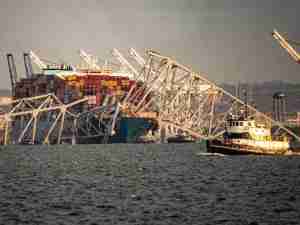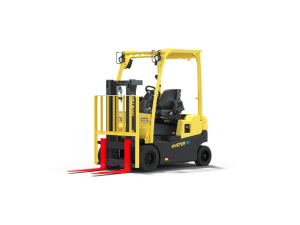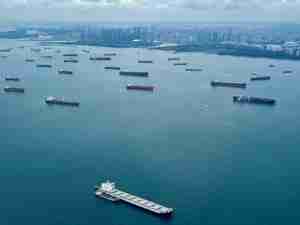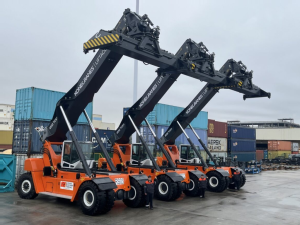Grain and project cargo dominate St. Lawrence Seaway traffic in October
posted by AJOT | Nov 14 2016 at 10:43 AM | Maritime | Ports & Terminals
Washington, D.C. - “The Great Lakes St. Lawrence Seaway System saw a steady flow of traditional cargoes during the month of October,” said Betty Sutton, Administrator of the Saint Lawrence Seaway Development Corporation. “Last month, shipments of aluminum, steel, generators, crane components, iron ore and containerized goods moved in the system. Thanks to a robust U.S and Canadian grain crop, agricultural products including corn, soy beans, wheat and sugar beet pellets made up the majority of the exported cargos.” Many of the ships that traded in the Seaway System this month will most likely make one last call before the end of the 2016 navigation season.
October brought with it two pieces of good news for the Port of Duluth-Superior. The Duluth Seaway Port Authority’s $18 million dock redevelopment project was completed, nearly tripling the Clure Public Marine Terminal’s outdoor storage capacity and doubling its heavy-lift cargo handling capabilities. Grain shipments through the Port of Duluth-Superior are also up this fall – on track to outpace 2016 and the Port’s five-year average. “The upward trend in grain is great news for this port, the regional economy and for the Great Lakes-St. Lawrence Seaway System as a whole,” said Vanta Coda, Duluth Seaway Port Authority executive director. “Moving grain overseas from the heartland of North America remains one of the most tangible components of our region’s international trade pattern. Project cargo makes its way in through this binational waterway, and backhauls of grain along those same trade lanes make freight rates even more competitive.”
“Despite the challenges in our traditional non-containerized steel segment, the Port of Cleveland continues to make positive gains in the project cargo market, thanks to the efforts of our two terminal operators, Federal Marine Terminals and C-Port Maritime Services,” said David Gutheil, Vice President, Maritime and Logistics for the Port. “In October, we handled multiple large project cargo moves from Europe, one of which consisted of multiple presses from Germany for the automotive industry. The other project was comprised of multiple pieces for a new natural gas-fired combined cycle power plant (CCPP) that will be built in northeast Ohio. The largest piece weighs in excess of 300 metric tons, and is the heaviest piece of project cargo that has moved through the Port of Cleveland in over a decade.”
Shipments of grain at the Port of Indiana-Burns Harbor are more than double the 2015 year-to-date total and include two recent export shipments to Québec. “Ag and steel-related cargoes are primary drivers for our 2016 shipments and Québec continues to be a key trading partner for exchanging Indiana commodities with world markets,” said Port Director Rick Heimann. “Looking ahead, we are expecting a surge in end-of-year shipments of steel products and bulk commodities for the steel industry in Northwest Indiana. Based on current projections, November could prove to be a near record month, especially for Seaway cargoes.”
“With arrivals at the Port of Milwaukee scheduled well into December, we are likely to see both steel and agricultural products well ahead of last year’s volumes,” said Port Director Paul Vornholt. “Additionally, the Port took delivery of a new crane this month, a 300-ton capacity Manitowoc crawler, adding to its efficiency in handling project cargo.”
The St. Lawrence Seaway reported that year-to-date cargo shipments for the period March 21 to October 31 were 25.8 million metric tons, down 5.23 percent over the same period in 2015. The dry bulk category was down 11 percent. Iron ore was down almost 10 percent; coal was down18 percent. The general cargo category was down 9 percent overall, with domestic general cargo posting a 9.5 percent increase. The liquid bulk category was at 22.6 percent over 2015.











